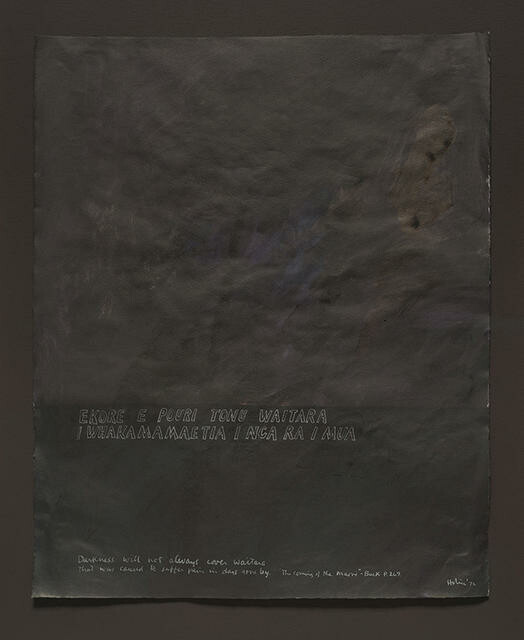B.
Parihaka Day
Behind the scenes
On 5 November 1881, following more than a decade of dispute over the confiscation of Te Atiawa land in Taranaki for European settlement, 1,600 government troops entered the prosperous settlement of Parihaka which lay on flat land between the mountain and the sea. The troops encountered 2,500 local people led by spiritual leaders Te Whiti-O-Rongomai and Tohu Kākahi, who met the military advance with creative acts of passive resistance including singing, skipping, and the offering of food.
Over the next 18 days, under the direct order of Native Minister John Bryce, the armed constabulary sacked the village and violently ejected more than 1,600 people. A six-pound Armstrong gun was mounted on a nearby hill and trained on the settlement. Te Whiti-O-Rongomai and Tohu Kākahi were arrested, and after six months in jail in New Plymouth, were imprisoned in the South Island.
In Christchurch, where they were interned at Addington Jail, Te Whiti and Tohu were shown the sights of the city in an attempt to impress them with the 'power of the Pakeha'. They climbed the newly-built ChristChurch Cathedral tower, and toured the Kaiapoi Woollen Mills, Christchurch railway workshops, and Canterbury Museum. Te Whiti later commented: "The Pakeha have some useful technology but not the kindness of heart to see that Maori also possessed much great technology which if adopted would lead to stability, peace and a great new society."
In 1883 Te Whiti and Tohu were returned to Parihaka where they continued to resist government incursions into their lands. Many of their followers, however, remained imprisoned in the South Island, where their wives and children had followed them into exile and poverty; it was not until 1898 that the last of the Parihaka men and boys returned to the Taranaki settlement.
The story of Parihaka has had a profound effect on New Zealand artists, and continues to be explored in song, theatre, literature and the visual arts. It is said to have inspired Gandhi's later acts of passive resistance, through two Irishmen who had visited Parihaka and later recounted the story to him. In 2000, Christchurch Art Gallery Te Puna o Waiwhetū acquired an important work on paper by Ralph Hotere from his 'Te Whiti' series, through the estate of artist Bill Sutton. Hotere's 'Te Whiti' works—and many others by artists including Colin McCahon—were commissioned for an exhibition curated by James Mack at Waikato Art Museum in 1973.
The text Hotere uses is drawn from a lament that marks the beginning of the 'days of darkness' of the Taranaki injustices.
"E kore e pouri tonu Waitara I whakamamaetia i nga ra i mua ra…
Darkness will not always cover Waitara / That was caused to suffer pain in days gone by…"
The lament was recorded by Te Rangi Hiroa in his book The Coming of the Maori (1949). Hiroa recalled that the lament was often performed in the 1890s by members of a drum and fife band established by Te Whiti's followers at Parihaka.
Writing at the time of the Parihaka: The Art of Passive Resistance exhibition in Wellington in 2001, curator Greg O'Brien noted that Hotere's 'Te Whiti' works were originally intended as studies towards larger paintings, which were in the end, not realised: the outlined lettering was to be replaced by stencilled text in the canvas versions. O'Brien observed: "In the Te Whiti series, words—with the messages and belief they contain—stand in for the lives of their authors: the political and spiritual leaders of the past, the ancestors."
"Prophetic utterance, in the 'Te Whiti' series, is brought down from the clouds and ploughed into the ground of human experience. While Te Whiti and Tohu are not bodily present in the series, through their words they stand as a living presence. The works chart the plough-like progress of the human spirit carving a furrow of meaning and hope through the various darknesses of human history."

